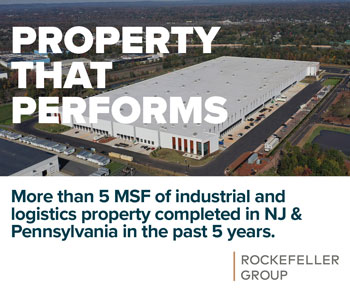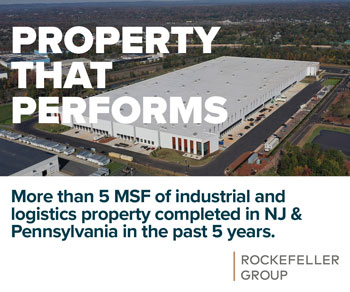By Michael G. McGuinness
As we celebrate Earth Day, it’s impressive to see how many more investment, siting, purchase and business decisions are being driven by growing public demand to reduce our carbon footprint. Government agencies, investors, consumers and businesses are quickly becoming aware of the need and benefits of embracing this paradigm shift. Owners and developers of commercial and industrial real estate property are increasingly accommodating their tenants’ demands for charging stations, solar panels and other brokered services. The popularity of electric vehicles (EV) continues to gain momentum across the globe as green investing is influencing automakers’ plans and the economics of owning an EV are becoming more favorable. Sustainability has become mainstream as society realizes its benefits, including lower costs, cleaner air, less traffic congestion, higher rate of return on investments, less dependence on foreign oil, better quality of life and less extreme weather.
 Pressure from state legislatures is also increasing to require warehouse operators to implement air pollution reduction and mitigation plans to address emissions and noise from warehouse operations — such as fulfillment centers, sorting facilities and parcel hubs — and from mobile or indirect source source emissions such as exhaust from delivery trucks. One such bill was recently introduced in the New York Assembly, as A9799.
Pressure from state legislatures is also increasing to require warehouse operators to implement air pollution reduction and mitigation plans to address emissions and noise from warehouse operations — such as fulfillment centers, sorting facilities and parcel hubs — and from mobile or indirect source source emissions such as exhaust from delivery trucks. One such bill was recently introduced in the New York Assembly, as A9799.
At the federal level, the Council on Environmental Quality issued final revisions on April 20 to National Environmental Policy Act (NEPA) rules that restore NEPA reviews for major infrastructure projects. The Office of Management and Budget also issued guidance to help federal agencies implement the “Build America, Buy America” sourcing provisions passed as part of the Infrastructure Investment and Jobs Act, or IIJA. The guidelines require federal agencies to consider all environmental impacts of an infrastructure project before issuing permits, including impacts associated with climate change. It remains unclear how these rules will impact major projects like Gateway.
The recent passage of the bipartisan IIJA included several provisions that will enable the Biden administration to take steps toward establishing the necessary infrastructure to support transportation electrification and increased demand for electric vehicles. It includes: (1) $5 billion in formula funding for states to build a national vehicle charging network; (2) $2.5 billion in grants to ensure access to charging stations in certain areas that are a priority for the administration, such as rural and disadvantaged communities; and (3) the issuance of guidance and standards to facilitate the infrastructure for a national charging network.
The new National Electric Highway Coalition, announced by the Edison Electric Institute, or EEI, intends to provide charging stations along “major U.S. travel corridors” by the end of 2023 in order to increase public confidence in driving electric vehicles for both private and commercial use. EEI anticipates that the domestic highway system will need more than 100,000 charging stations for the “projected 22 million” electric vehicles by 2030.
Meanwhile, Prologis, one of the world’s largest industrial developer and owners and providers of logistics solutions and services, recently launched “Prologis Mobility.” This initiative will help its customers build an EV and zero-emission mobility infrastructure that will allow their tenants to meet their and their stakeholder objectives. “Prologis Mobility seeks to be the complete solution for fleet electrification,” according to Dan Loflin, commercial head of EV charging at Prologis, speaking at the March I.CON West: The Industrial Conference. With this program, Prologis creates additional value to its buildings with on-site readiness that includes infrastructure elements, utility connections and operations and maintenance software.
While electrification of our transportation system will require significant expansion to the charging infrastructure, which will take time, there are other critical elements to address. Government agencies, utilities and the private sector must collaborate to plan the timing for the build-out of this infrastructure. While plenty of generation capacity may exist, there are woefully few distribution lines, substations and transformers to handle the increased demand. Joern Tinnemeyer, chief technology officer and senior vice president at EnerSys, pointed out at I.CON West that countries like Germany and Norway are a good preview of how EV market penetration might look in the U.S. in the coming years. “They’re making infrastructure mistakes that we can learn from,” he said. He was referring to the need for better management and scheduling of when charging occurs. He also noted that energy storage systems (batteries) are key to supplementing real time charging stations to help manage peak consumption loads.
Closer to home, United Parcel Service has announced its participation in a short sea shipping pilot program to move trailers by barge across New York Harbor, taking trucks off the road to avoid busy roadways. It involves moving five trailers round-trip across the harbor form Red Hook, Brooklyn to Bayonne, New Jersey — a 4.5-mile journey. Gov. Murphy also recently announced an additional $6.6 million investment to offset the cost of 16 new electric vehicles —namely, ambulances, dump trucks and garbage trucks.
We’ve reached a place where it is incumbent upon society, financially beneficial to business and palatable to consumers to embrace decarbonization. It is this collective paradigm shift, a harmonic convergence of interests, that will propel us to a cleaner and more sustainable future.
Learn more about this topic at the East Coast I.CON being held Thursday, June 9, at the Hyatt Regency in Jersey City. One of the panels, “The Surging Electric Vehicle Industry and Its Impact on CRE,” will discuss the expected growth of EV manufacturing, the scaling up of production and providing insight on the impact to industrial real estate — square feet of new facilities needed, geography of expansion, power requirements, design modifications to existing buildings and more.
(Note: Some of this article was taken from NAIOP blog posts dated March 16, 2022, by Toby Burke, and March 23, 2022, by Brielle Scott).
Michael McGuinness is CEO of NAIOP New Jersey and has led the commercial real estate development association since 1997. NAIOP represents developers, owners, asset managers and investors of commercial, industrial and mixed-use properties, with 830 members in New Jersey and over 19,000 members throughout North America.










